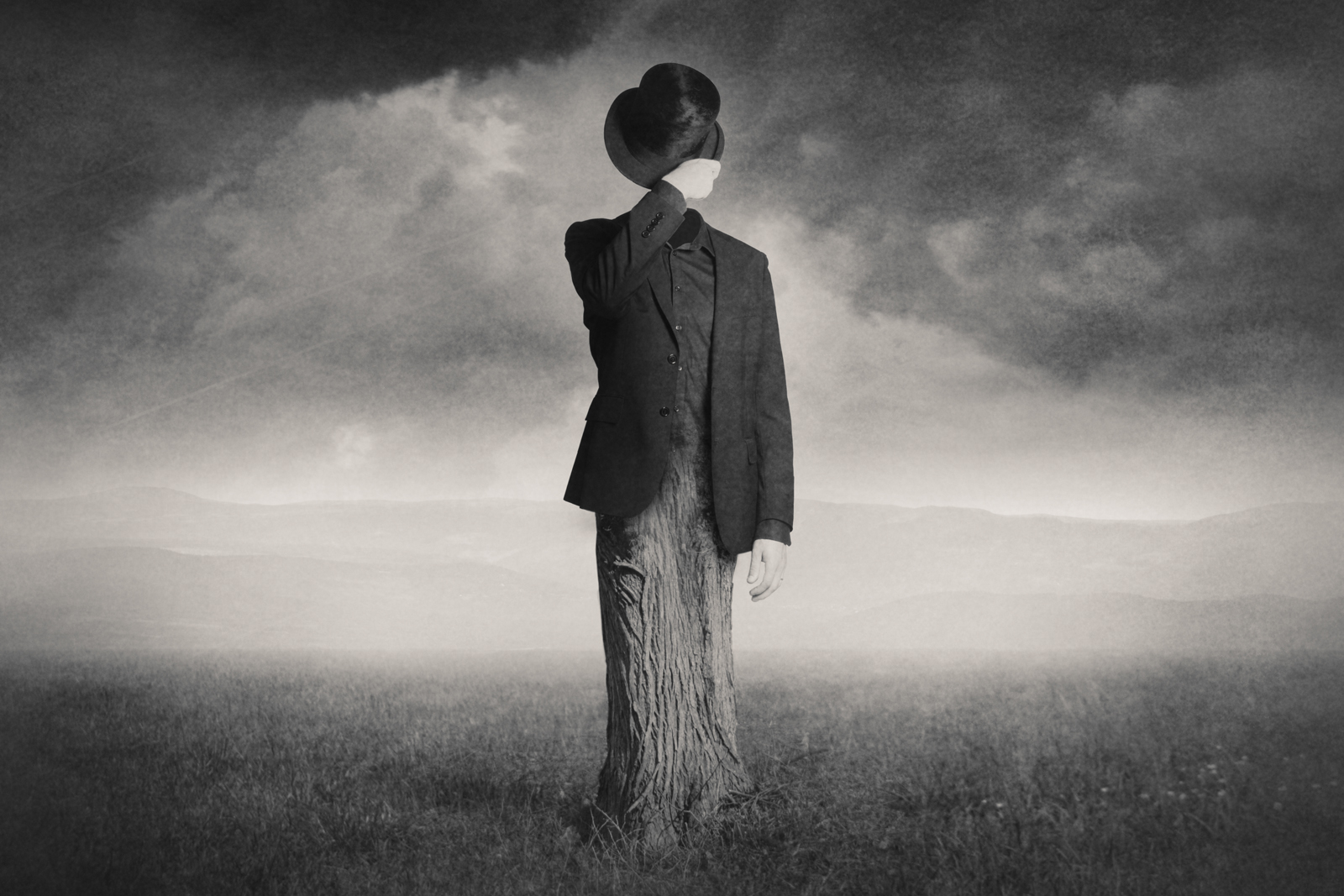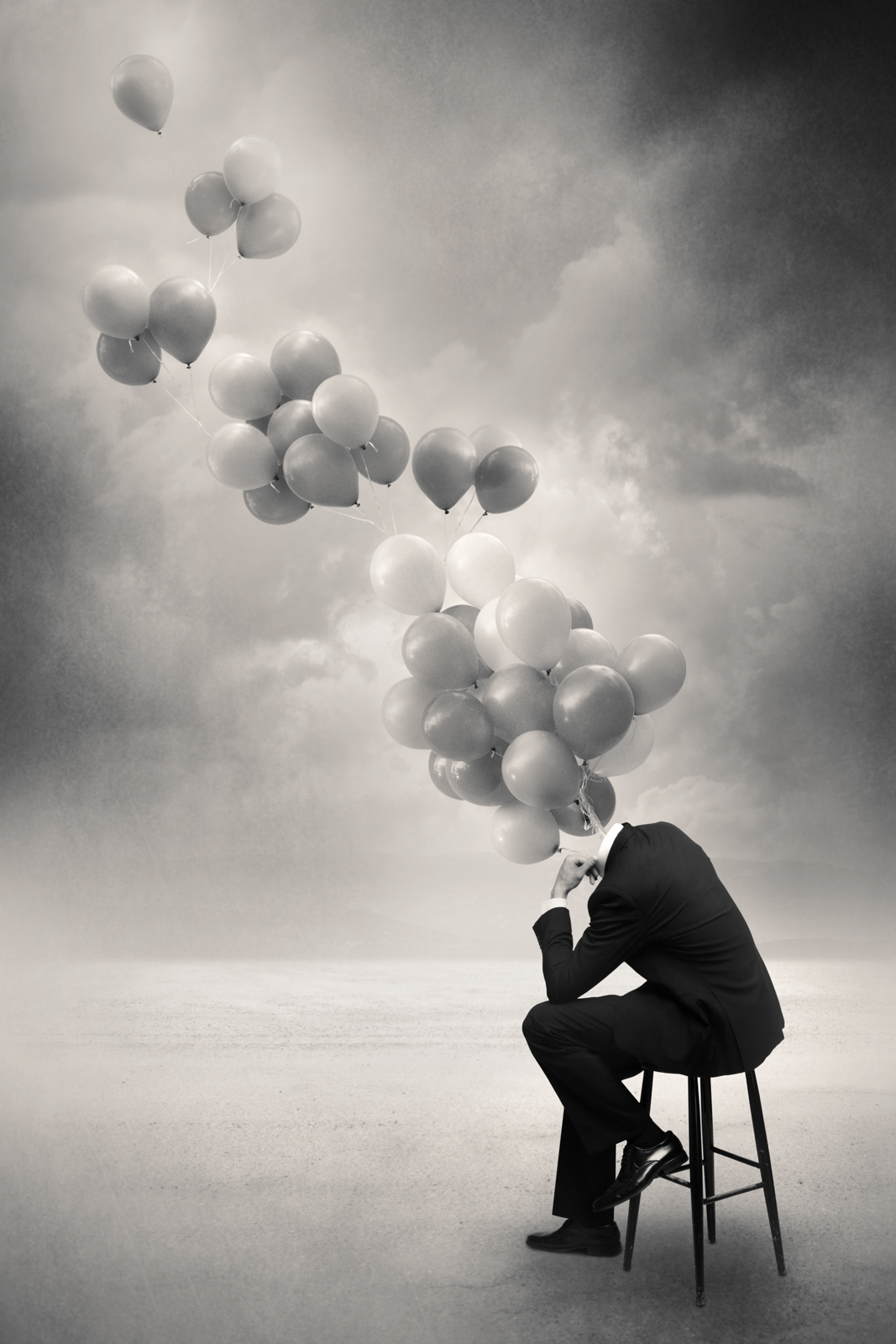It gives me great pleasure to announce that our photography blog will be featuring interviews and the photography of some of the extremely talented photographers from Adore Noir Magazine. Adore Noir magazine is published online from Vancouver, B.C. Canada and is dedicated to fine art black and white photography. This interview features Tommy Ingberg, a Swedish fine art photographer who specializes in photo montages.

Photography by Tommy Ingberg
AN: Please introduce yourself. Where do you live?
TI: My name is Tommy Ingberg. I am 32 years old and live in Upplands Väsby, just north of Stockholm, Sweden.
AN: When and how did you get into photography?
TI: I have been preoccupied with photography as long as I can remember. When I was 15 years old I got my first system camera, a Praktica with two lenses. It had no autofocus and the metering did not work. I spent endless hours experimenting and shooting as much film as I could afford. It was then I really decided that I wanted to do photography. I needed a way to express myself, and instead of playing in a band, painting or writing, I chose photography. What followed were several years of intensive photography but it was when I could afford a digital camera that I really started to develop. Thanks to the fact that I could see the result directly in the camera, the whole process of trial and error was speeded up tremendously by not having to wait for the pictures to come back from the lab.
Since then I have tried several areas of photography, portraits, concert photography, street photography, nature photography and everything in between. I can’t tell you why I chose photography, but there is something about it that really speaks to me. Even nowadays I can still feel that excitement when I know that I just captured a great picture, often when something unexpected happens in front of the camera. No matter how well you plan your shoots, there is still an element of chance involved, and I love that about photography.
AN: What sparked your interest in photo montages?
TI: I have always gravitated more towards art photography than documentary photography. When looking back at my old pictures I can see how my current style of imagery slowly but surely matured into what it is today. Subconsciously it’s been there the whole time in terms of lighting and the choice of a motive. During all the years I have photographed I have constantly been looking for my own expression, but it always felt like a piece of the puzzle was missing. It never really“clicked”. The motives I sought simply didn’t exist, at least not in reality. I could not really tell the stories I wanted to with just the camera.
About three years ago I made a series of pictures where I mixed street photography with some editing; such as cropping, selectively blurring parts of the images and adding textures to them. By crossing the line into heavy image editing I was able to tell a coherent story. Encouraged by the result I started experimenting with pure photo-montages and it was then when I allowed the images to really grow beyond the camera that the pieces fell into place, and I could refine my style further. That was a great feeling, to finally find “my” kind of expression.

Photography by Tommy Ingberg
AN: Do you plan your images in advance or is it spontaneous?
TI: For me creativity does not come easy. I can’t just sit around and wait for an idea. It is hard work and a lot of trial and error. Sometimes I can work for weeks and only produce pictures that go straight into the garbage bin, but I know that if I keep working, just keep taking pictures and making montages, I will eventually get a result I am happy with. I have found that if I keep my mind focused on creating it will eventually get the pieces together and produce a good idea for a picture. Often the good ideas appear when I take a break from the creative work and let my subconscious take over. I find this to be a good solution for all kinds of problem solving, not just creative. When I have a solid idea I start working by creating a sketch on paper, photographing the pictures I need, and make a rough first draft on the computer. Sometimes I need to do this a couple of times before I’m happy with it and proceed to make the final composite.
I’ve been photographing digitally long before I started doing montages, and since I never really throw any image files away I have a huge archive of stock images I can use in my montages. Nowadays I also shoot general stock images for use in future montages. When doing a composite, I often combine images from my archive with pictures shot specifically for the montage I’m working on. Typically I shoot my main subjects in a studio with controlled lighting, or if too large to fit in a studio, outside during an overcast day and combine them with pictures from my archive. Even though I do create spontaneous composites out of just images in my photo archive, I find that the results are often better if I shoot with a specific idea in mind.
AN: Tell us about your Reality Rearranged series.
TI: For me, surrealism is about trying to explain something abstract like a feeling or a thought, expressing the subconscious with a picture. The Reality Rearranged series is my first try atdescribing reality through surrealism. During the two and a half years I have worked on the series I have used my own inner life, thoughts and feelings as seeds to my pictures. In that sense the work is very personal, almost like a visual diary. Despite this subjectiveness in the process I hope that the work can engage the viewer in hers or his own terms. I want the viewer to produce their own questions and answers when looking at the pictures, my own interpretations are really irrelevant in this context.
AN: What feelings are you trying to convey to your viewers?
TI: My images cover a wide spectrum of emotions and basic human self-reflection that I think we all deal with. I often have a very specific feeling or thought in mind when I create an image, but I try to get some distance from it before I start working on the image, otherwise I have found that the result gets a little too straight forward and blunt. A bit of distance helps me create calmer images with more subdued emotion and commentary. I feel that an image works best if there is some ambiguity to it. I try to make my images ask questions rather than answering them. I think it is very interesting to hear different people’s interpretations of my images, even if it’s an interpretation I can’t relate to. I think one of the main characteristics of surrealism is that it forces the viewer to think.

Photography by Tommy Ingberg
AN: What inspires you?
TI: That varies. Sometimes it’s a simple object. For instance, I found this really awesome hat that inspired me to make a picture. I saw it a couple of weeks ago and had it in the back of my mind for a while before I developed an idea and today I took it home to photograph it. I read a lot and watch lots of movies and find inspiration in that. Lately I’ve also been trying to read poetry. My main source of inspiration though is music. I always listen to music and could really not imagine life without it. Despite movies, music, books and other external sources of inspiration I still feel that I need inspiration from inside myself, my life and my experiences. I need to have something to say that comes from within; otherwise there is no real point in creating. I would just be re-telling someone else’s story, creating meaningless, empty imagery.
AN: What are your influences?
TI: Since I’ve tried so many types of photography my influences have been many and diverse, from classic photography and arts, rather than from digital art. Early on it was the great masters of photography like Cartier-Bresson, Leiboviz, Erwitt, Brassai and so on — too many to name. I consumed a lot of photography and had new favourites every day. When I started doing photomontages I started to learn more about the great painters and artists from other fields, like Warhol, Picasso, Magritte, Miró and Escher. I have learned a lot by studying greatness in all fields of art including music, photography, painting, poetry or anything else. It is very humbling to look at your own work in that context.
AN: Do you have any current projects on the go?
I am still working on my Reality Rearranged series, and plan to finish it this year. I am also working on a series that I callStranger. With that series I will continue doing surrealism but with more complex stories, and with a more complex style of imagery. I have also tried to mix in more realism, and a different style drawing inspiration from pictorialism. As well I have some ideas and projects in early stages I’m working on.
AN: What is your final say?
TI: Well, I don’t feel I am in a position to give advice to anyone, I am still early in my development as an artist, but if there is anything I’ve learned so far it is that you only have one shot at life, so try to spend as much time as possible doing what you love.

Photography by Tommy Ingberg
This interview and accompanying images was reprinted with permission from Adore Noir.
Adore Noir is a subscription based online photography magazine specializing in awesome fine art black and white photography.



I love the conceptualization and the creativity, and very inspiring images too.
Great series of images. I love this style of work.